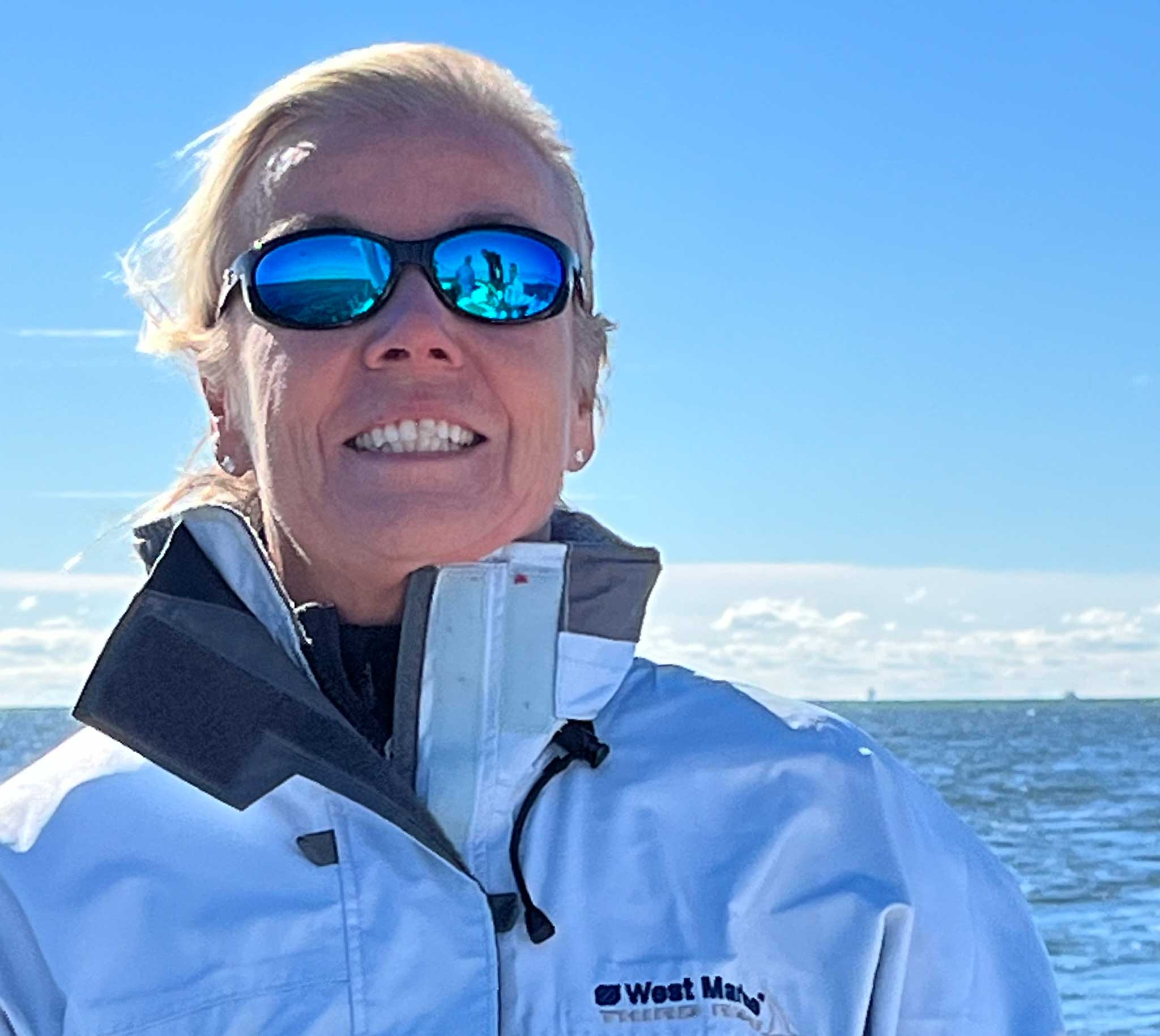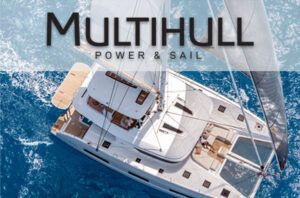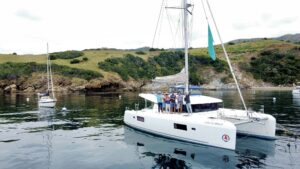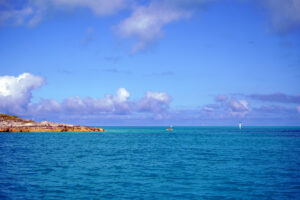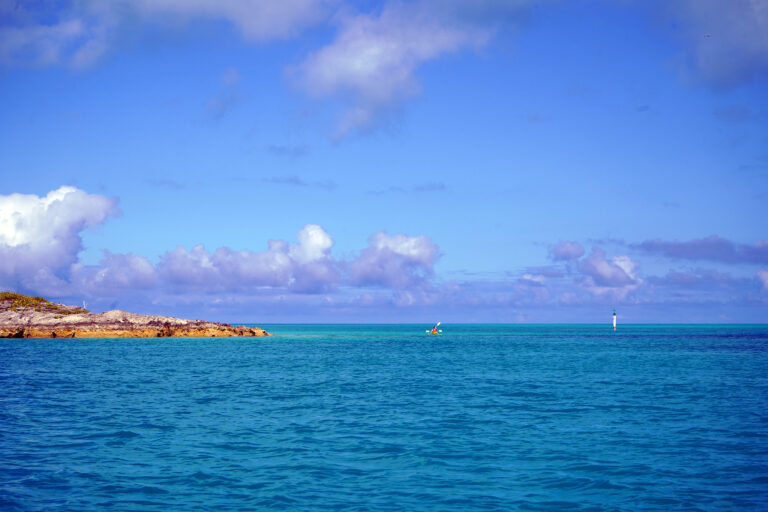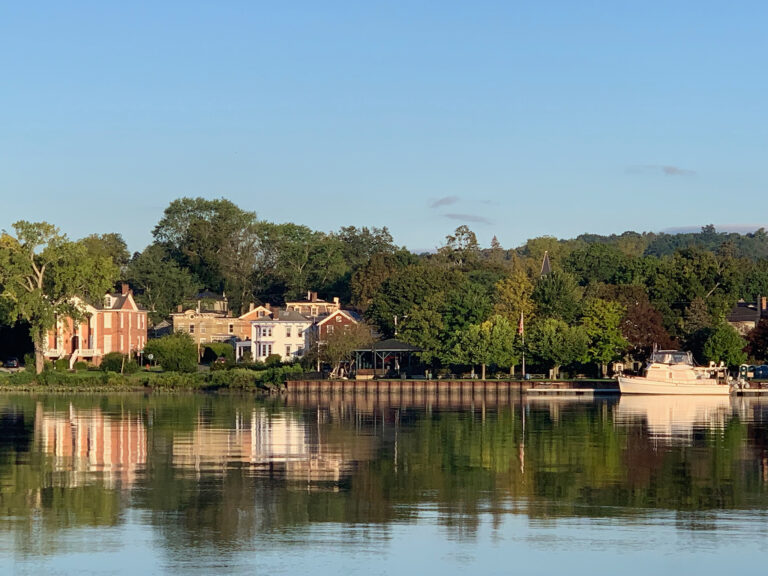
For years, Nautitech Catamarans has been doing things differently from other production cat builders, and it seems to be paying off. When the French company launched its Open series in 2013, it shrunk the saloon and dedicated more space to the cockpit where most catamaran living takes place. The company also placed the helms outboard on the amas rather than high up on a bulkhead or flybridge. Owners loved both approaches. Now Nautitech has decided to focus on its core market of private owners rather than building for charter. That strategy can be tricky, since it ignores 50 percent of the market. But it does give the builder the ability to dial in exactly what distance cruisers are looking for. With that in mind, Nautitech just introduced its new 44 Open, a boat positioned perfectly for the cruising-couple sweet spot.
Design & Construction
Naval architect Marc Lombard teamed up with designer Christophe Chedal Anglay to create one good-looking boat. The bows are curved and slightly reversed; there are dual chines on the hulls; the windows are angular; and the coachroof is sleek and angled upward in the aft sections, an effect that adds the perception of movement even at rest. It all comes together well. Our test boat even had the optional black paint on the aluminum mast that made it look like carbon.
The hulls are infused with a layup that includes closed-cell foam as a core rather than balsa. The La Rochelle-based builder says this feature makes the boat virtually unsinkable. It also makes the hulls more resistant to water intrusion. The bilges are solid glass, and the keels are sacrificial in case of a catastrophic underwater collision. There are even a set of strategically placed watertight bulkheads—all to heighten safety during passagemaking.
The high bridge deck clearance minimizes pounding into head seas, and the bows have a fine entry to facilitate pointing ability. The keels have a higher aspect ratio—more like daggerboards without the hassle of having daggerboards. The twin rudders are set well aft, making the boat that much more maneuverable.
On Deck
Two steps lead up from the squared-off swim platforms to the cockpit and twin helms. Our test boat had 16in B&G MFDs and autopilot control panels to both port and starboard, a compass on the port side only, and squared off wheels painted black. A pair of small optional Biminis swoop up from outboard to either side to provide a bit of shade for the driver, and the wheels are attached to angled pedestals just aft of well-integrated binnacles. The helm seats are semi-double, meaning they’ll be comfortable for two smaller people or a single large one.
Nautitech designs are known for sizeable cockpits that rival the outdoor spaces found aboard many much larger models. To port is a straight settee. To starboard a dinette with a pair of tables that can be joined into one for dinner or lowered for a coffee table effect at happy hour. Eight people will have plenty of room to dine together. An additional settee is built into the transom behind which are a set of optional dinghy davits.
Three steps up on either side lead to the side decks, where it’s nice to see ample handholds in the form of grabrails and a well, or groove, that’s integrated into the coachroof. (It would be a great idea to design a water catchment system that uses this deep groove to capture rainwater.)
Forward are a pair of twin lounges that still leave plenty of room for a set of double trampolines to both save weight toward the pointy end and also create an oh-so-tantalizing place to relax in when sailing on a gentle reach. A pair of convenient wooden steps on centerline lead up from the deck to the cabintop, making it easy to get there and manage the mainsail or lines at the mast.
If I have one complaint with the boat, it’s the horizontal windlass placement. Inexplicably, it’s buried below the deck, tucked in so deeply that it can be tough to access. That said, the rest of the anchoring system works well, and accessing the windlass will only be an issue for cruisers who tend to anchor often.

Accommodations
As mentioned earlier, the Open concept dedicates scads of space to the exterior, truncating the saloon. Inside, there’s a small L-shaped settee to port where two or three people can gather. The galley to starboard is nearly 360 degrees in its layout. A three-burner cooktop, separate oven at knee level and twin sinks form an L-shaped working area. Forward of that is a stand-up counter area and additional refrigeration. This creates acres of counter space, separate work areas for a sous chef and a bartender, and a great place to stand and lean against when the boat is underway. With cruisers in mind, Nautitech added a full-sized, forward-facing nav desk to port, a space that will be appreciated by captains and crew seeking a space dedicated to ship’s business.
The 44 Open is available with three or four cabins and two heads. The master suite in the owner’s version takes up the entire port hull, with a desk amidships and a large head and shower forward. The two guest cabins are to starboard and share a head. Here again, Nautitech decided to go with a smaller number of larger living spaces rather than shoehorning twin heads into a 44ft LOA.
Liveaboards and bluewater cruisers will appreciate the optional “Smart Room,” a utility space to keep gear, spares, tools and an optional washer/dryer, that can be substituted for the forward starboard cabin.
Under Sail
On our test boat, we had perhaps the most versatile sail configuration you can find for easy handling. It included a fully-battened mainsail, a self-tacking jib that sheeted to a track on the cabintop and a Code 0 on a furler. In gusty conditions with 15-20 knots of wind, our SOG at a 60-degree apparent wind angle (AWA) was 9.1 knots under the jib. That ticked up to 9.6 knots when we unfurled the Code 0, then dropped to 5.4 knots at a 130-degree AWA—although at that point the wind was a bit down as well.
I really liked the Antal mooring cleats forward that swivel into a closed position when not in use, so you don’t have to worry about them catching a wayward Code 0 sheet. I also like the way the mainsail dropped down so smoothly when it came time for us to return to the marina. I mention this because the mains on large cats often get hung up due to the geometry of their battens, making it necessary to use a separate line to pull the sail down. Nautitech has figured this out, and the sail came down no problem, an especially nice feature when the wind is really blowing.
Under Power
On the way back to the marina, we put the engines through their paces on relatively protected water with a 1-2ft chop. The standard propulsion is supplied by twin 50hp Volvo Penta diesels. However, our test boat was outfitted with a set upgraded 60hp engines equipped with Flexofold three-bladed folding props. We had seven people aboard, and the fuel and water tanks were half full, but we weren’t carrying the extra weight of a dinghy.
Top speed was 11.5 knots at 3,000 rpm. A more efficient cruise speed will be 9 knots at around 2,500 rpm. The engines are well-insulated to minimize noise and vibration. Engine controls are to starboard where they will be easy to use when docking.
Conclusion
I always look at catamarans with an eye toward personally cruising on one. My parameters are straightforward—the boat needs to be good for passagemaking, it has to work for short-handed sailing and must provide sufficient comfort for long-term living aboard. The Nautitech 44 ticks all these boxes. To my eye, it’s a great looking boat as well.

LOA 43ft 8in LWL 43ft Beam 24ft 2in Draft 4ft 9in Sail Area 1,142ft2 Displacement 22,712lb Fuel/Water (GAL) 132/158 Engine 50 hp Volvo Penta with saildrive SA/D 22.8 D/L 121 Designer Marc Lombard Builder Nautitech Catamarans, Rochefort, France, nautitechcatamarans.com Price $982,000 (loaded)
MHS Summer 2022

